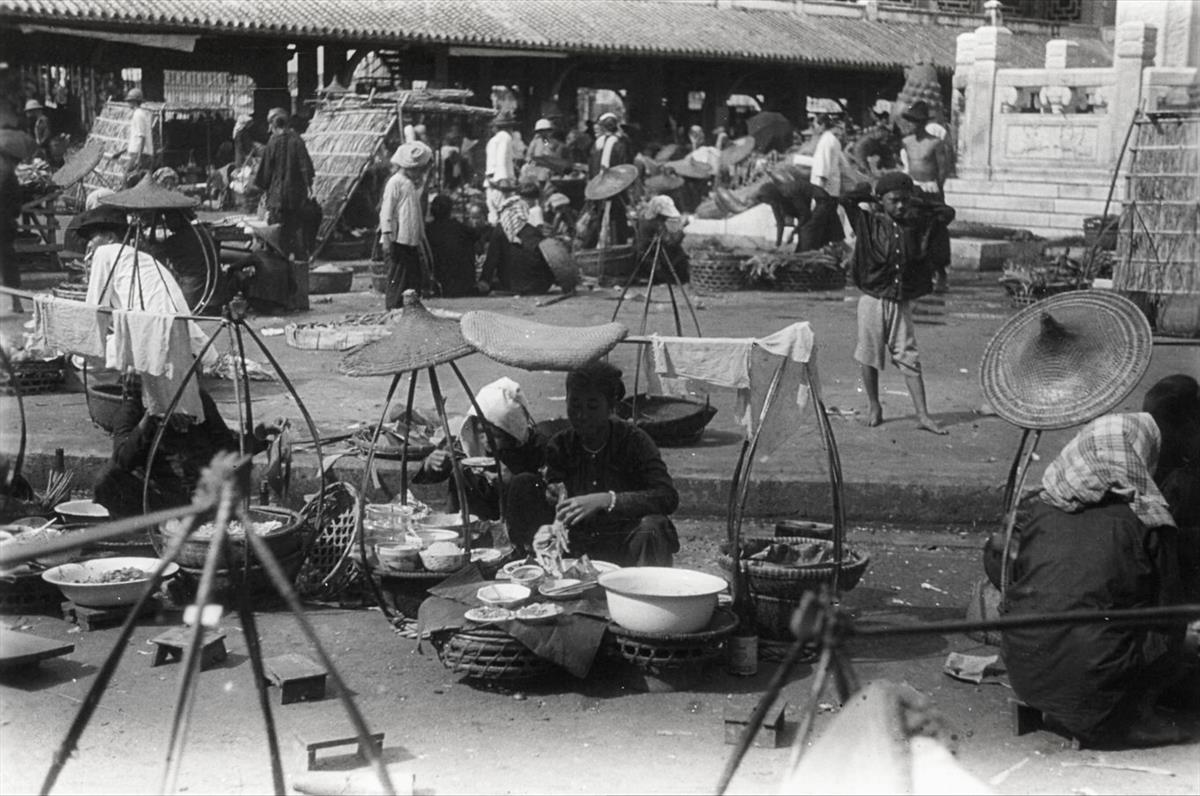Economic activities of the Southern Chinese before and after 1975

The Cho Lon, My Tho, Cu Lao Pho, and Ha Tien areas have long been famous ports, bustling with Chinese merchant ships alongside domestic and foreign merchant ships. Exported goods include rice, sugar cane, dried areca nuts, spices, etc. Imported goods include products such as Chinese medicine, writing paper, metal and glass products from Japan, Hong Kong, and the West etc.
Right from the beginning of settling in the South, especially in Saigon - Cho Lon, the occupations of the Chinese people were divided according to the Chinese language groups: Cantonese Chinese people focused on retail business of general goods, opening shops, hotels, restaurants, repairing machinery..., Chaozhou Chinese people specialized in manufacturing, trading, processing tea and food..., Fujian Chinese people specialized in purchasing scrap, making votive offerings..., Hakka Chinese people specialized in trading in oriental medicine..., Hainanese Chinese people specialized in both Chinese and Western-style restaurants... During the French colonial period, in the South, a very wealthy Chinese bourgeoisie appeared, it was not uncommon for capitalists to come from poor craftsmen, small traders... like Quach Dam, the builder of the massive Binh Tay market, who used to be a scrap dealer in his humble days. Chinese capitalists built many factories, production facilities, trading companies... dominating a number of economic sectors in the South at that time.

During the period of 1954 - 1975, a number of Chinese merchants established relationships with foreign countries, imported machinery and equipment with modern technology, and established enterprises and factories hiring Vietnamese and Chinese workers. In addition to the milling and food processing industry that had been established in the previous period, this period saw the emergence of quite modern textile, plastic production, and food processing enterprises such as VINATEXCO, VINATEPHINCO, VISSAN, VIMYTEX... Some Chinese capitalists became "Kings" such as Tran Thanh - King of MSG, Ly Long Than - King of Steel, Ma Hy - King of Rice…
In the period before 1975, a number of struggles of Vietnamese and Chinese workers who were severely exploited broke out in the form of strikes, market protests, etc., against the Chinese capitalists.
After 1975, the bourgeoisie in the South, including many Chinese capitalists, was eliminated, and the Chinese working class became citizens of the new regime, contributing to the ownership of enterprises and factories. Over the past 40 years, Southern Chinese workers, traders, and small owners have continuously contributed to the construction of the Socialist Republic of Vietnam through diverse production and business activities.

In the first years after the country was completely liberated, our people experienced many difficulties in life and economic activities. Chinese workers in the South have joined hands with other ethnic groups in the country to overcome difficulties, produce, and do business in Chinese organizations such as production teams, cooperatives, etc. The Chinese have demonstrated their dynamism in solving difficulties in raw materials, machinery, energy, etc., in the extremely scarce situation at that time. Thanks to the exploration, experience, and overcoming difficulties of Chinese workers, small traders, and small owners, the production and business activities of the Chinese have contributed positively to the economic sector of the Southern region, contributing greatly to the process of eliminating subsidies and shifting to a market economy. Since 1986, with the Party's renovation policy, the economic activities of the Chinese people in the South have had positive changes. Thanks to their long-standing business experience, the Chinese have contributed to promoting small-scale industry, trade, and services in the South to gradually recover and develop more quickly. The production and business establishments of the Chinese in the form of cooperatives, groups, and production establishments have continuously grown in number and scale. Since 2000, the economic activities of the Southern Chinese have grown steadily. Many Chinese production and business establishments have transformed into limited liability companies or joint-stock enterprises. Some Chinese business establishments have invested hundreds of billions of VND. The production and business activities of the Chinese have contributed significantly to the economic growth of the Southern provinces in recent times.

